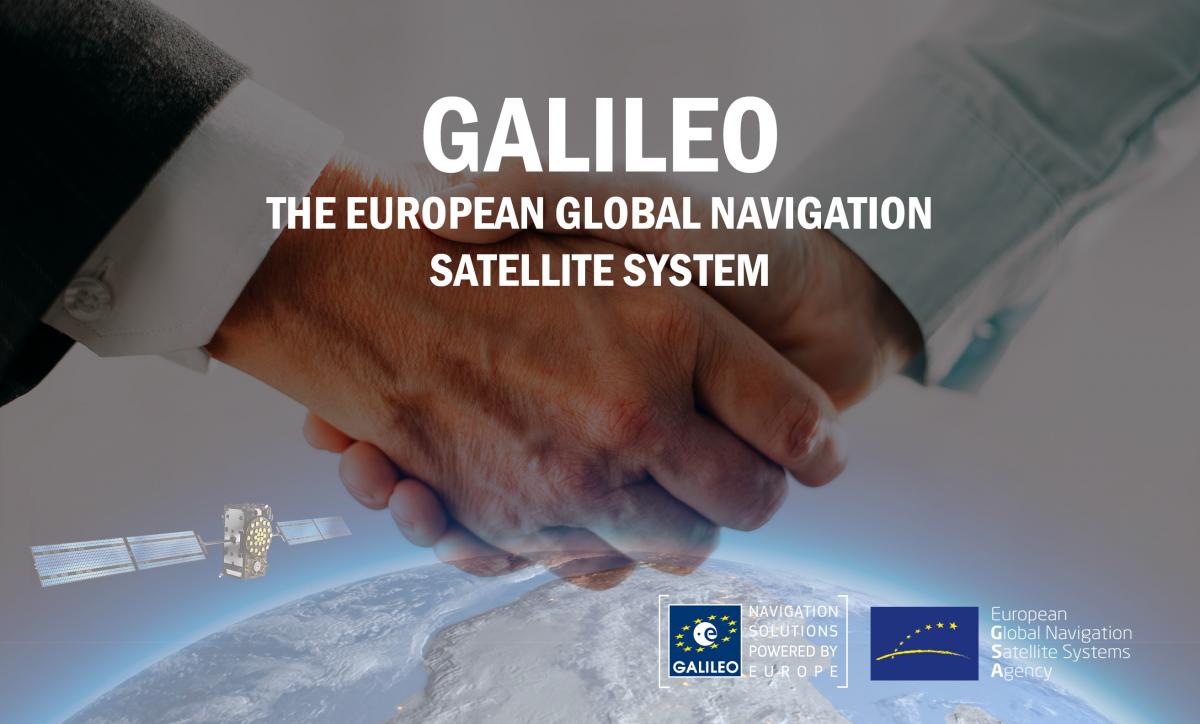For the GNSS community, the place to be in early March is Munich. From March 1 to 3, the Bavarian capital hosted its 13th Satellite Navigation Summit. The theme of this year’s showcase event was ‘GNSS – creating a Global Village’ and, of course, the European GNSS Agency (GSA) was there in this important year for Galileo.
Speaking at the Opening Plenary session of the 2016 Munich Satellite Navigation Summit,  GSA Executive Director Carlo des Dorides noted that GNSS, and in particular Galileo, will play a vital and increasingly important part in the global digital infrastructure better known as the Internet of Things (IoT). To highlight just how important a role GNSS plays, according to the GSA’s latest GNSS Market Report, some 50 billion connected ‘smart objects’ will be on the market by 2020, with GNSS playing a vital enabling role.
GSA Executive Director Carlo des Dorides noted that GNSS, and in particular Galileo, will play a vital and increasingly important part in the global digital infrastructure better known as the Internet of Things (IoT). To highlight just how important a role GNSS plays, according to the GSA’s latest GNSS Market Report, some 50 billion connected ‘smart objects’ will be on the market by 2020, with GNSS playing a vital enabling role.
“What can Galileo bring to the Internet of Things?” des Dorides asked. “Better accuracy and availability due to its signal strength in such difficult environments as in the city, as well as an authenticated open signal.”
During the roundtable session, des Dorides further outlined the GSA’s important role in promoting European GNSS technologies to enable the IoT. “Many devices will need to securely communicate their location,” he said. “Galileo Initial Services, which will launch later this year, will provide more secure positioning data, meaning the information is more trustworthy.”
He further highlighted the wide range of signal authentication and security that Galileo will soon be able to provide. “For mass market applications, the answer might be Open Signal authentication involving ‘light’ encryption of the data, but not the signal itself, while the Commercial Service will offer encryption of the signal and data,” he said. “At the highest level, the Public Regulated Service (PRS) will provide a very secure service for public authorities that covers the entire service provision chain including enabled receivers.”
Galileo Takes the Spotlight
Galileo was a main focus throughout the opening – and rightfully so. 2016 promises to be a year of great importance for European GNSS. Speaking during the opening, Pierre Delsaux from the European Commission’s DG GROWTH looked forward to the launch of Galileo Initial Services towards the end of year, in addition to six more satellites being launched into orbit, both of which will lead towards full coverage by 2020. Later in the debate, he noted that Initial Services would be achieved with the 12 satellites already in orbit. “The Initial Service provision should not depend on further successful launches in 2016,” he said.
ESA Director General Johann-Dietrich Woerner, confirmed that collaboration between ESA, the European Commission and the GSA was going well and this – together with Europe’s great heritage and culture as pioneers, explorers and scientists – made him very optimistic.
Meanwhile, US National Coordination Office for Space-based PNT Director Harold ‘Stormy’ Martin also wished every success to Galileo in 2016. “All global systems must work together to ensure interoperability and full access, and I look forward to a robust and reliable Galileo constellation,” he said.
Looking towards the launch of Initial Services, des Dorides rounded out the session by noting that he anticipated Initial Services to be available in October. “The Initial Service provision is important for market uptake and stimulating greater Galileo compatibility with receiver manufacturers in terms of both hardware and software,” he concluded. “I fully anticipate 100% compatibility by 2020.”
Participants were invited to learn more about the business potential that the European Space Programmes, Galileo and Copernicus, will offer at the upcoming edition of ‘European Space Solutions’ to be held in The Netherlands 30 May – 3 June 2016. To learn more and register: http://european-space-solutions.eu/
Media note: This feature can be republished without charge provided the European GNSS Agency (GSA) is acknowledged as the source at the top or the bottom of the story. You must request permission before you use any of the photographs on the site. If you republish, we would be grateful if you could link back to the GSA website (http://www.gsa.europa.eu).